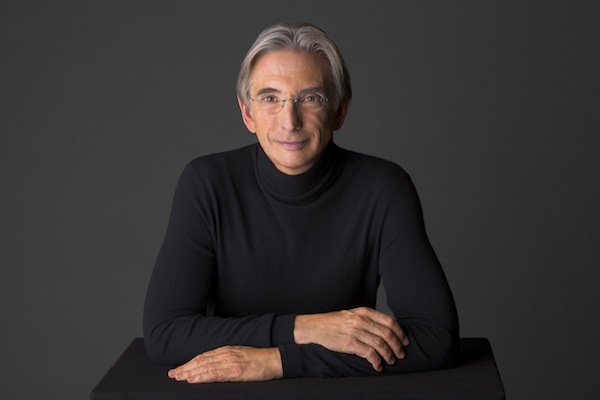
A reconciliatory Mahler’s Ninth ends NWS season
By Sebastian Spreng, Visual Artist and Classical Music Writer
Once again, Mahler ‘s prophetic statement, “My time will come,” proved true. To verify, you had only to look on the full house at the Miami Beach’s New World Center and the almost 2,000 people who watched the outdoor Wallcast on a balmy “Super Moon” night. Conductor Michael Tilson Thomas, who has been closing each season with one of the composer’s symphonies, aptly chose Mahler’s Ninth to wrap the 2011-2012 season, possibly the most brilliant, varied and rounded of his “American Orchestral Academy” in recent years.
Mahler’s last symphony is one of ultimate farewell – a symphony of acceptance, consolation and life’s end (not of “death”). A supreme effort to meet the self-imposed challenge to surpass his fear of the “Beethoven’s Ninth curse” and to recover from his four-year-old daughter’s death, the end of his post as director of the Vienna Court Opera and the diagnosis of his fatal heart condition. Here, there is no “Resurrection” (as in the Second), “joy greater than sorrow” (as in the Third) or divine reward (as in the Fourth). Here there is – as his paladin Bruno Walter put it – “a unique soaring between farewell and a vision of heavenly light.” In the end, only an embracing reconciliation remains of this master of ambiguities, who at that time wrote “I am thirstier for life than ever.”
One hundred years after its posthumous premiere in 1912, Michael Tilson Thomas approached this opus with a very personal, poised, clear, sort of “distant” conceptual vision. A vision of a modern man looking on the last exponent of the great romantic tradition and the virtual initiator of the music of our time. It was a chamber-like version, transparent, devoid of excessive emotional displays, swift, diaphanous and enhanced by a notable performance of “his” young orchestra.
From the first movement, the conductor masterly tied up loose ends, highlighting the echoes and quotations of Mahler’s First and later symphonies, of Das Lied von der Erde, Beethoven’s Les Adieux and Johann Strauss’ Enjoy Life, to which so significantly and paradoxically alludes. Tilson Thomas quickly sketched the landscapes of the journey of Mahler’s life; landscapes that burst in and disappeared in ragged musical phrases, and expertly pieced them together so as to display in front of us the complete image of the work’s monumental musical architecture.
The witty Ländler of the second movement was rustic and explicit, evincing the “savage vulgarity” pointed by Theodor Adorno. Then, placed the Rondo-Burleske’s counterpoints on the edge of Expressionism pairing the macabre with the sublime, the morbid with the sardonic grimaces thanks to the excellent, uninhibited brass section. After the wild sarcasm of those two movements, with the fourth came the enigmatic leap into space, the vastest of Mahler’s adagios.
However, Michael Tilson Thomas did not plunge us into the abyss. His rendition was carried aloft as encapsulated into a glowing structure (with an iridescent contribution by the strings), rescuing us from the inevitable, devastating chaos. A welcomed restrain prevailed over the standard over emotionality leading to a luminous dissolution. Thomas brought a powerful and sublimated ending, with no tears, with a hint of hope in new beginnings, with the wink of the waltz Enjoy Life prevailing over the pessimism of the strings that ominously evoked the Kindertotenlieder. Another way of telling Mahler’s ever-present credo: “Joy, deeper still than heartache”.
Mahler’s Ninth was a worthy memento of a memorable season that made one long for the coming one.
Recent Content
-
Artsarticle ·
-
Artsarticle ·
-
Artsarticle ·
